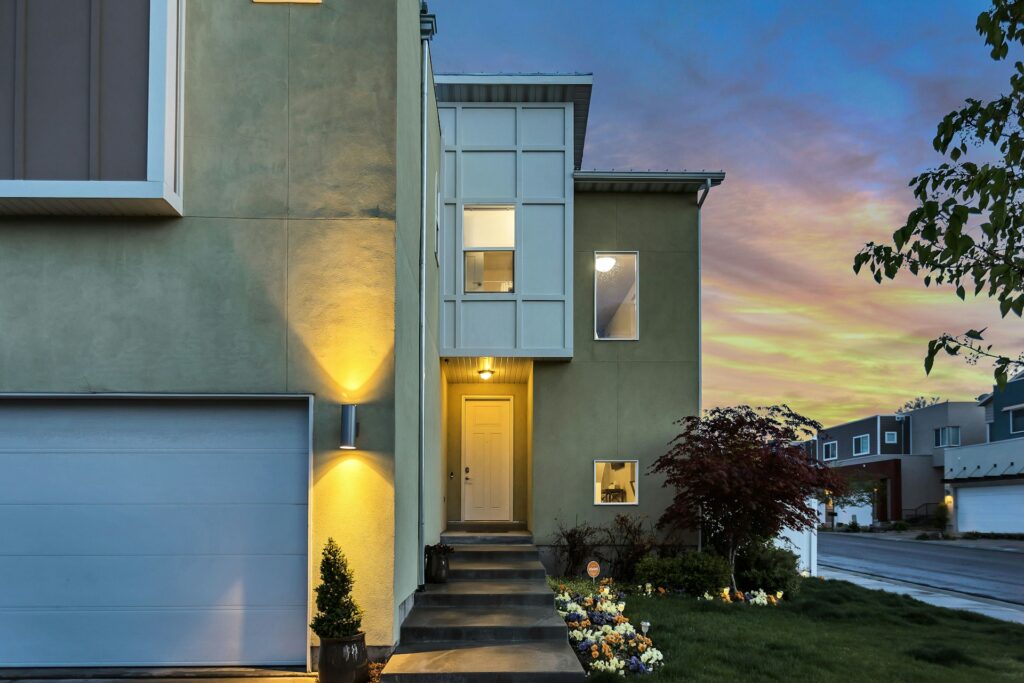Passive house design is a smart and efficient way of building homes that use very little energy for heating and cooling. It’s all about designing and constructing buildings to be super energy-efficient, keeping you comfortable while saving money on energy bills, and being kinder to the environment.
The idea is to create sustainable homes that can stay warm in winter and cool in summer. This article will explain why this concept is becoming more popular today.
History and Evolution of Passive House Design
In the 1970s, people in Europe came up with the idea of passive house building. It was developed by Dr. Wolfgang Feist, who wanted to create buildings that didn’t rely so much on heating and cooling systems. Over time, passive house standards and certification processes were developed to ensure that these homes meet certain criteria for energy efficiency.
Core Principles of Passive House Design
Passive house design relies on several core principles to ensure maximum energy efficiency and comfort:
Superior Insulation
Passive houses are built with excellent insulation, much like wrapping a snug blanket around a house. Insulation materials like rigid foam boards or mineral wool are used in walls, roofs, and floors to prevent heat from escaping during winter and entering during summer. This insulation keeps the indoor temperature stable without relying heavily on heating or cooling systems.
Airtight Construction
Passive houses are constructed to be tightly sealed, ensuring there are no gaps or leaks where heat could escape or cold air could seep in. Materials such as these are what passive home builders use:
- Airtight membranes
- Tapes to seal joints
- Windows
- Doors
- Other openings
This airtightness helps maintain a consistent indoor temperature and prevents drafts, improving comfort and reducing energy consumption.
High-Performance Windows
Special windows are a crucial element of passive house design. These windows have multiple layers of glass with low-emissivity coatings and inert gas between the panes to reduce heat transfer.
They allow sunlight to enter while minimizing heat loss, contributing to passive heating in winter and preventing overheating in summer. Proper window placement is also essential to optimize natural light and solar heat gain.
Ventilation with Heat Recovery
Passive houses feature a mechanical ventilation system with heat recovery (MVHR). This system continuously circulates fresh air into the house while simultaneously expelling stale air.
The heat recovery unit captures heat from the outgoing air and uses it to preheat the incoming fresh air, ensuring efficient ventilation without significant heat loss. This maintains high indoor air quality while conserving energy.
Thermal Bridge-Free Construction
Builders pay special attention to eliminating thermal bridges, which are areas where heat can escape more easily. Thermal bridges occur where building materials meet, such as at corners, edges, and connections between different materials.

To prevent thermal bridging, builders use continuous insulation, careful detailing, and materials with low thermal conductivity. By minimizing thermal bridges, passive houses retain more heat, further enhancing energy efficiency.
Benefits of Passive House Design
Building a passive house has many important benefits for both the people who live in it and the environment.
Energy Efficiency
Passive houses are incredibly energy-efficient, using up to 90% less energy for heating and cooling compared to traditional homes. This remarkable energy efficiency translates to significantly lower energy bills for homeowners, saving them money in the long run.
Unlike conventional homes, passive houses rely on their design and insulation rather than energy-intensive heating and cooling systems.
Improved Indoor Comfort
One of the most noticeable benefits of passive house design is the consistent indoor comfort it provides. With even temperatures maintained throughout the year and excellent indoor air quality, passive houses offer a comfortable living environment regardless of the weather outside.
Say goodbye to cold drafts in winter or hot spots in summer—passive houses maintain a comfortable temperature all year round.
Health and Wellbeing
Passive houses prioritize indoor air quality, which is crucial for the health and well-being of occupants. The ventilation system in passive houses ensures a constant supply of fresh air while expelling stale air, reducing the buildup of indoor pollutants, allergens, and moisture.
This helps to minimize the risk of allergies, respiratory problems, and other health issues, creating a healthier living environment for occupants.
Environmental Sustainability
By using significantly less energy for heating and cooling, passive houses contribute to environmental sustainability by reducing carbon emissions and lessening their overall impact on the planet.

With the global focus on combating climate change, passive house design offers a practical solution to reduce greenhouse gas emissions associated with residential buildings.
Long-Term Cost Savings
While the initial cost of building a passive house may be slightly higher due to specialized materials and construction techniques, the long-term cost savings are substantial. Lower energy bills mean that homeowners recoup their initial investment over time, making passive houses a financially sound choice in the long run.
Additionally, passive houses typically have lower maintenance costs due to their high-quality construction and durable materials.
Resilience to Energy Price Volatility
Passive houses are less reliant on fossil fuels and traditional energy sources, making them more resilient to energy price fluctuations. As energy prices continue to rise, homeowners of passive houses are less affected, enjoying stable and predictable energy costs over the lifespan of their homes.
Increased Property Value
The energy efficiency, comfort, and environmental benefits of passive house design can increase the property value of homes. Buyers are increasingly interested in sustainable and energy-efficient homes, making passive houses an attractive option in the real estate market.
Building the Future, One Home at a Time
Passive house design is a practical and effective way to create homes and buildings that are comfortable, healthy, and environmentally friendly. By focusing on energy efficiency and smart design principles, passive houses offer a sustainable solution for the future of architecture and construction.
